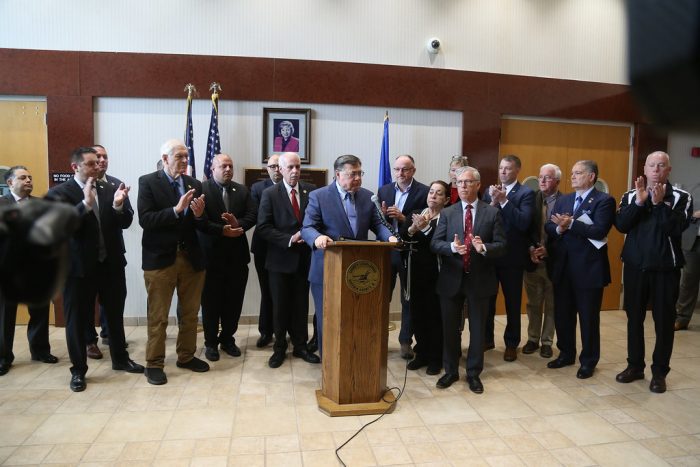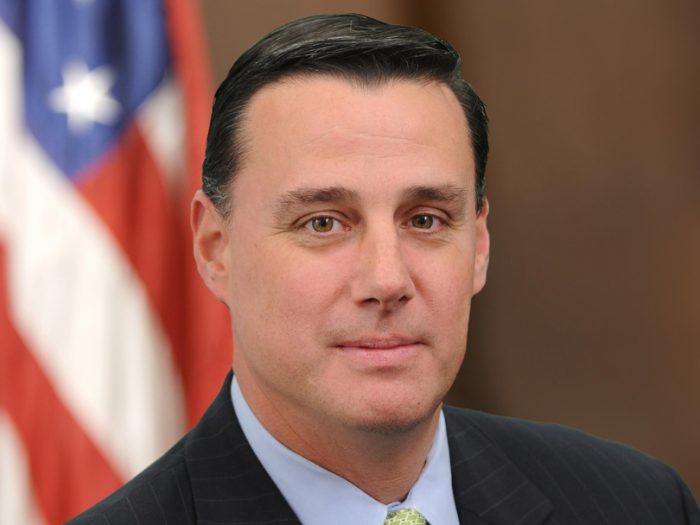The Town of Smithtown has been awarded $21.3 million in funding from the State of New York, which will be distributed to Suffolk County for the downtown (Smithtown) Sewer District expansion project.
This funding was announced on November 1 as part of Governor Kathy Hochul’s 2024 Local Water Infrastructure Improvements initiative. This latest award announcement, raises Smithtown’s total grant funding to over $40 million in the last six years and over $80 million since the Administration took office in 2017.
“We are deeply grateful to Governor Hochul, our dedicated partners in Suffolk County and the State of New York for making this essential project possible. With their support, Smithtown is at the halfway mark to make necessary improvements that will not only modernize our infrastructure but also enhance the future of our business districts, environment, and community,” said Supervisor Ed Wehrheim in a press release.
The $21.3 million in funding will be directed to Suffolk County for the Smithtown Business District Sewer Extension Project, marking a pivotal step in the town’s mission to support healthier infrastructure, protect environmental resources, and boost local economic growth. This grant reflects ongoing collaboration between Smithtown, Suffolk County, and New York State.
Over $40 million in Smithtown tax dollars directed back home to Smithtown in six years includes:
- $1.38 million for stormwater flood mitigation infrastructure for Smithtown and Kings Park awarded by Congressman Nick LaLota through the Interior and Environment Appropriations bill.
- $10 Million Dollar Downtown Revitalization Initiative, for the business district of Kings Park
- $13 million in American Rescue Plan aid funds from Suffolk County for the Town of Smithtown.
- $10 million towards the Smithtown’s Business District Sewer Construction
- $3 Million towards connecting the St. James Business District to Sewer Treatment District #28 at Fairfield.
- $5.4 million in funding from Suffolk County for the Kings Park streetscape work and competition of the Sewer District 6 expansion
- $2.5 Million in funds from the Suffolk County JumpStart grant for traffic calming and streetscape improvements in Kings Park
- $1,280,951.44 for the Long Beach Road Elevation from the Federal Emergency Management Agency (FEMA) and was awarded through the New York State Division of Homeland Security & Emergency Services’ Hazard Mitigation Grant Program.
- $1Million USDA Urban and Community Forestry Grant program for tree planting and maintenance
- $1.1 Million Edgewood Avenue Corridor Grant secured through Congressman Lee Zeldin through the community development fund.
- $900,000 in Suffolk County JumpStart funds for the acquisition and restoration of the century-old Calderone Theatre, which is currently in disrepair.
- $500,000 in Suffolk County Jumpstart Funds to Build Kings Park Municipal Parking Lot on Pulaski Road
- $200,000 for the Emergency Operations Center from the Federal Emergency Management Agency (FEMA) and was awarded through the New York State Division of Homeland Security & Emergency Services
Funding brought back to Smithtown since 2017 also includes:
- $40 Million Dollars from the State of New York, under the State’s Transformative Investment Program (TIP), for Suffolk County to connect Kings Park Business District to Suffolk County Sewer District No. 6 and to go towards the sewer expansion project for the Downtown of the Smithtown Hamlet.
- $799,982 for the Local Government Efficiency grant program – Town of Smithtown Highway Services Consolidation
- $97,375 in Regional Economic Development Council grant funding for the Stormwater Management Feasibility Study for Cordwood Path ($72,375) & St James Visioning Study ($25,000)
“Since Supervisor Wehrheim’s appointment in 2017, Smithtown has dedicated significant resources to securing competitive state and federal grants to strengthen its infrastructure and community programs. The awarded funds have been allocated across a variety of transformative initiatives, from downtown revitalization to flood mitigation, municipal infrastructure, and environmental sustainability. The Town of Smithtown is committed to utilizing every resource to ensure the health, safety, and economic prosperity of its residents. With over $80 million in grants secured since 2017, Smithtown continues to make meaningful progress toward a brighter and more resilient future,” read the release.


































